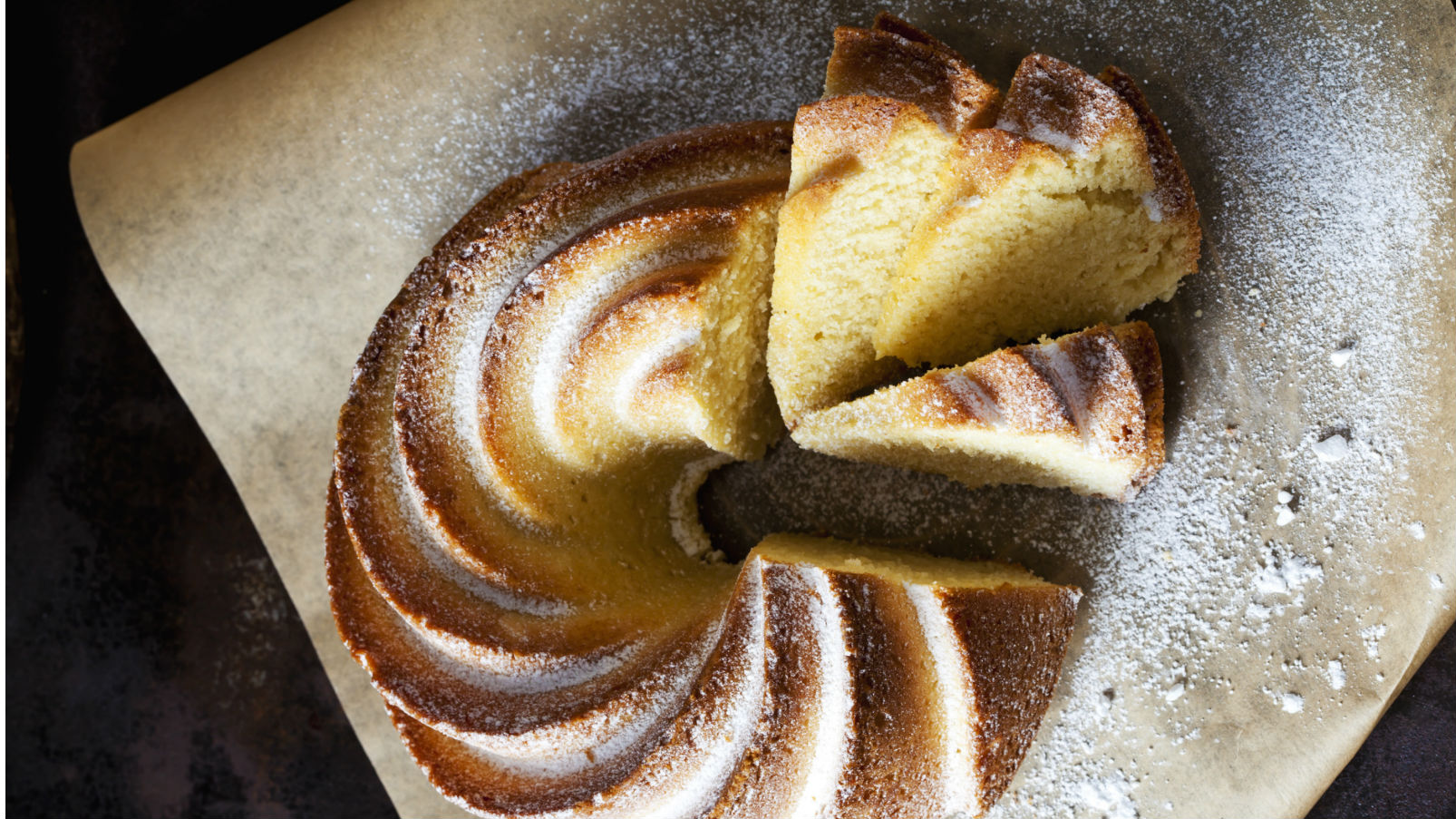If you did a culinary DNA search on baba au rhum, you’d find that this fancy French cake’s ancestral line has the same humble roots as the homey babka.
It all started with the inspired tinkering of an exiled Polish king. No one knows exactly what happened, of course, but it seems that Stanislaus I, twice deposed in 18th-century Poland, moved to his country estate in France, where he loved to cook and held court in the chateau kitchen. There, he baked a gugelhopf, a yeast cake invented by Viennese bakers to celebrate the victory of the Austrians over the Turks in 1683. Gugelhopf is rich and regal-looking. It’s usually baked in a tall, fluted pan called a Turk’s head mold because of its resemblance to an Ottoman sultan’s turban.
The cake came out too dry, so the ex-king soaked it in wine and decided to call it baba (grandma), because it reminded him of the welcoming confections of everyone’s baba back in the old country. In fact, besides for the shape and some chopped-up dried or candied fruit, gugelhopf and baba are essentially the same.
As is babka, which is among the most beloved of Jewish comfort foods. But while babas are large cakes and were mostly saved for special occasions such as Easter, babkas, though similarly egg-rich and yeasty, were smaller and regularly baked by Jewish balaboostas. Babka means “little grandma,” and in most Eastern European Jewish households, they were not only smaller but plainer, too, as dried fruit, raisins, and spices were costly. Babkas were more like little loaf-pan versions of Stanislaus’ gugelhopf.
The Nosher celebrates the traditions and recipes that have brought Jews together for centuries. Donate today to keep The Nosher's stories and recipes accessible to all.
The ex-king was so pleased with his invention that he served it in dramatic fashion to his guests at a party one night. He poured some alcohol over his gugelhopf, set it aflame, and carried it into the dark ballroom, thrilling the crowd. He called the cake Ali Baba — a play on the word baba, but also a tribute to a character in The Thousand and One Nights.
The story and recipe might have ended there, except that the Stanislaus’ daughter eventually married French king Louis XV and gave the recipe to Nicolas Stohrer, her pastry chef, who revised it to include raisins, candied fruit, and a soak with rum. And thus, baba au rhum was invented.
Over the years, baba au rhum and babka went on to produce more progeny. Parisian pastry chefs, reluctant to be outdone by a Polish pretender, created several versions, changing spices, shapes, and alcohol soaks. More than a century later, when baba au rhum had already become a classic, a pastry chef named Auguste Julien decided to bake baba in a plain ring mold and substituted kirschwasser (German cherry brandy) for the rum. He glazed the cake with melted apricot preserves and served it with a mound of whipped cream in the center. The cake, named savarin to honor Jean-Anthelme Brillat-Savarin, French author of The Physiology of Taste, is considered one of the most elegant pastries ever created.
And the homey babka? Less stylish to be sure, but most beloved by Jews and non-Jews alike, and reinvented with ever-more variations. For most babka-lovers, the basic question is: cinnamon or chocolate? But these days there are recipes galore and this “grandma loaf” is stuffed with chocolate, nuts, marzipan, fresh and dried fruit, preserves, and sprinkled with streusel in top.
And so the baba, a simple old recipe, stands proud today, centuries on. We take pleasure in the numerous varieties that have sprung from it — fancy offerings in elegant pastry shops, humble cakes from neighborhood bakeries, and fragrant loaves baked in our own ovens. Because a great recipe will always stand the test of time.



